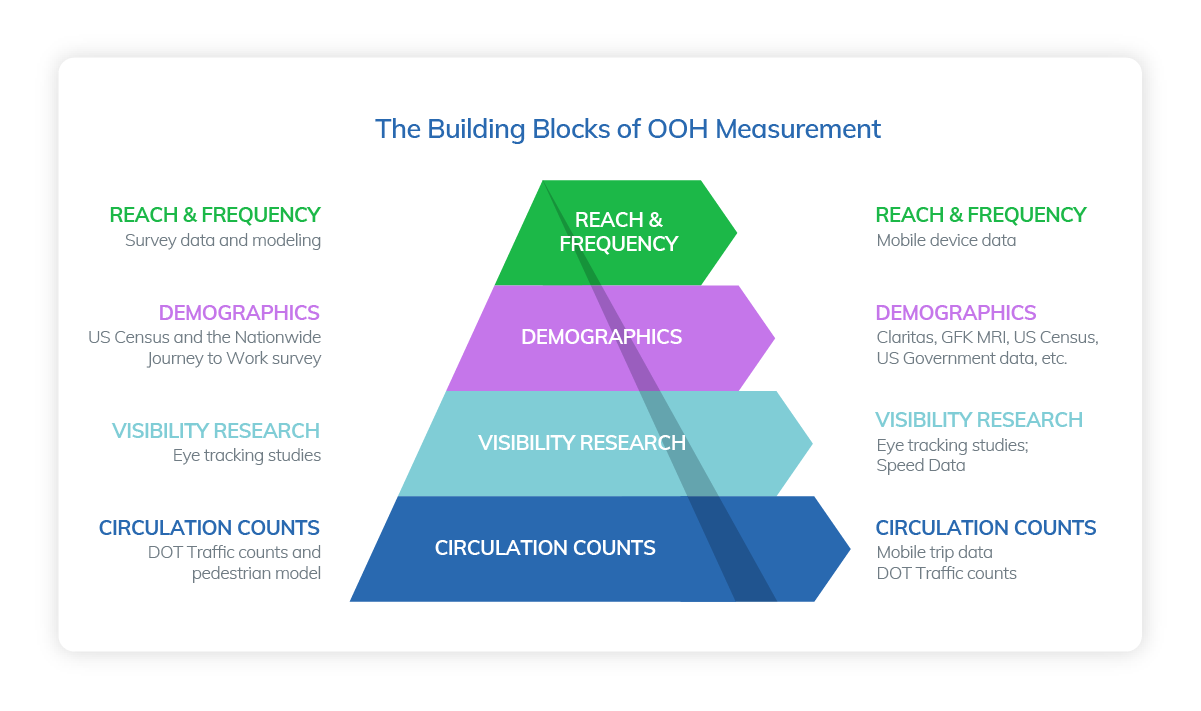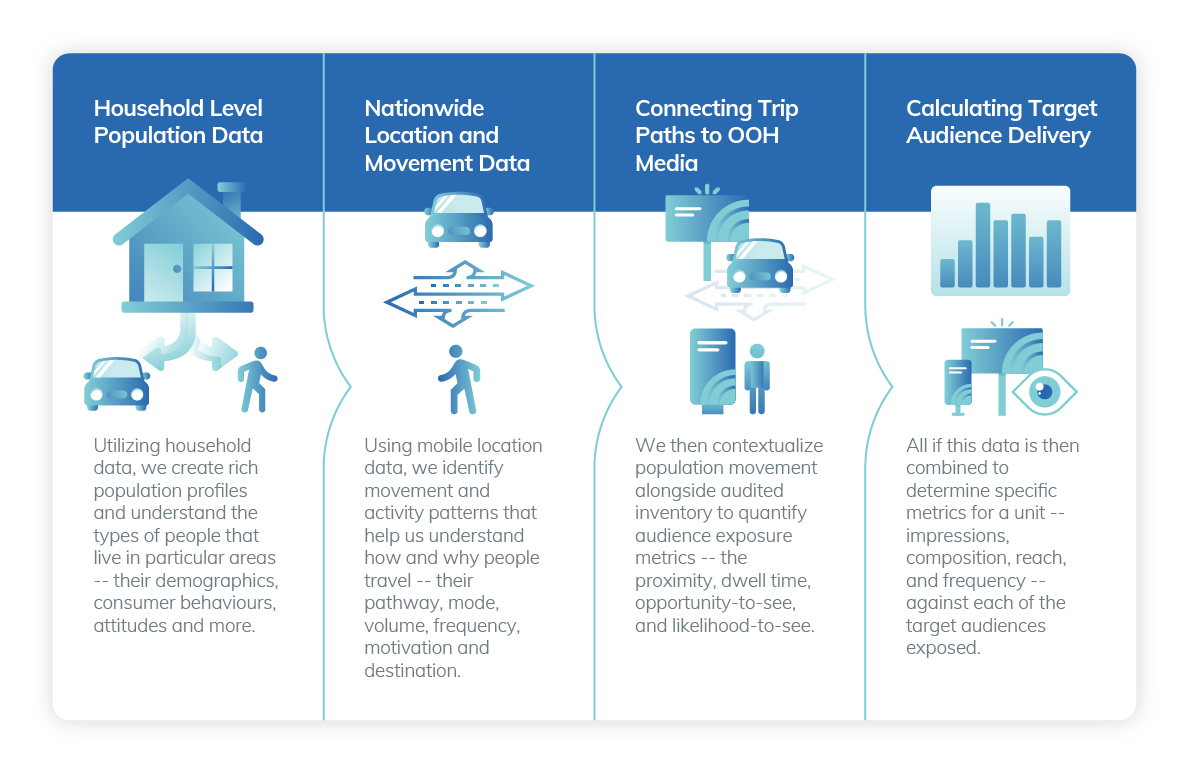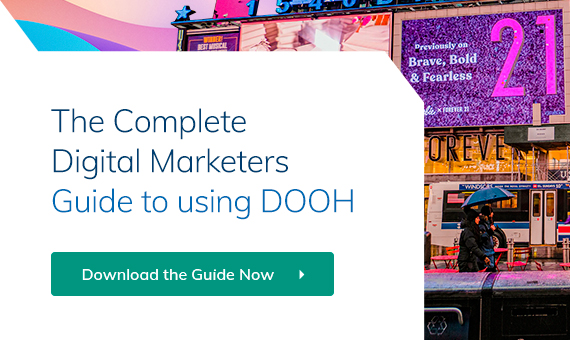Looking to get started with an outdoor ad campaign but are unsure how to measure OOH advertising and its effectiveness?
It’s an understandable concern.
After all, on the surface, it might seem difficult to measure the success of out-of-home (OOH) advertising in the same way that you can with, for example, TV, radio, or online efforts.
While internet advertising tools count precisely how many clicks an ad generated and TV and radio allow you to capture ratings figures, OOH ads display in the physical world where such metrics are harder to glean.
So, how do we know how many people our OOH ads are reaching?
Thankfully, the effectiveness of outdoor advertising is easier to measure than you may think.
In fact, using the right platform, there are many different ways to measure the effectiveness of an OOH advertising campaign.
Measuring the Effectiveness of Outdoor Advertising
So – how is OOH marketing measured?
Well, the first method of measuring OOH is also the simplest. Known as the before and after method, you simply look at sales figures before and after running the ad. If sales increased, the likelihood is that the ad is working.
Compare the cost of running the ad against how much additional profits were generated and you can calculate your return on investment (ROI).
This, however, is a rather crude methodology for measuring the effectiveness of your campaign – and if conducted in isolation, it may not be producing accurate results.
For example, it would be essential that you weren’t running any other campaigns on any other channel at the same time, as any of these, or a combination of factors – internal and external – could be responsible for the surge in sales.
So, are there more reliable methods for measuring OOH advertising?
Yes, there are.
Measuring OOH Impressions
With OOH, you can measure with great accuracy how many people will walk or drive past your advertisement and see its content.
Impressions can be measured using travel surveys, data modelling and census data, amongst others.
However, today, there are even more accurate ways to calculate impressions that can provide information to advertisers in real time.
This is achieved through Location Data or location based mobile data.
Today, most people carry smartphones everywhere they go. Smartphones are equipped with location tracking technology, which maps where a person goes throughout the day. Using this data, advertisers can learn how many people are walking past their ad, as well as (anonymized) demographical information of who those people are.
What’s more, location tracking services can also determine how many of the people who walked or drove past an advertisement went on to visit a brick-and-mortar store. This way, advertisers can understand which ad locations yield the best results.

(Image source: geopath.org)
Additionally, detailed OOH impression metrics are provided by the non-profit organization that audits outdoor advertising – Geopath.
Through a range of audience location measurement solutions, Geopath measures pedestrian volumes, traffic volumes and vehicle occupancy. From this information, Geopath can determine what percentage of people (drivers, passengers, and pedestrians) actually view a specific advertisement.

(Image source: geopath.org)
Today, most OOH and digital OOH (DOOH) companies utilize Geopath to calculate OOH impressions. Governed by a board equally represented by advertisers, agencies and OOH media companies, Geopath ensures all parties are receiving reliable data.
Individual Screen Delivery and Performance
Access to reliable data is crucial to OOH advertisers.
Using programmatic DOOH (pDOOH) platforms, DOOH is purchased using the eCPM (effective cost per thousand views) metric. This means DOOH media owners charge advertisers a specific rate for every 1,000 impressions they get.
However, unlike, for example, online advertising, where one advertisement on one screen is only likely to reach one person, OOH is a one-to-many medium – that is, more than one person is likely to be looking at the same screen playing the same advertisement at any given moment.
This means that an impression multiplier must also be determined. In effect, the impression multiplier represents the number of impressions one playout of an ad on an individual screen should count for.
For this reason, in many cases, it will take fewer than 1,000 plays for an advertisement to achieve 1,000 impressions.
As such, advertisers need to be able to track the number of playouts it takes to reach each 1,000 impressions they’re paying for.
DOOH ads typically play on a loop, so when you play on a loop, you are committed to a time interval as per the publisher (frame owner selling cycle), which might deliver to outside the target audiences and not against your target audience.
Conversely, for an ad playing on a digital billboard programmatically, buyers would reach their specific target audience.
Having ready access to individual screen performance data is crucial for advertisers to be able to optimize campaigns.
Achieve Growth Through a Powerful pDOOH Platform
Brands and advertisers are increasingly utilizing DOOH as part of their advertising campaigns. Though it’s true that, as a result of the pandemic, the OOH advertising industry took something of a hit in 2020, with lockdown restrictions now being eased, spending is growing once more and is expected to return to pre-pandemic levels over the coming two years.

(Image source: statista.com)
There are good reasons for this. As well as having the potential to reach large audiences, DOOH ads can be both interactive and dynamic.
See: 5 Astounding Digital OOH Advertising Examples that Will Inspire You
With The Neuron, you can pay for impressions and get access to advanced real-time OOH analytics to determine precisely how your campaigns are performing and make inflight adjustments accordingly.
The Neuron’s easy-to-use platform makes it simple to plan, buy and manage your DOOH activities:
- Access dashboards to execute campaign optimization on-the-fly
- View audience information and number of impressions delivered
- Easily see individual screen delivery and performance results, including number of playouts
- Obtain eCPM information
- Get reports by day, week, and month to track performance figures over time
With packages to suit both agencies and SMBs, The Neuron is the number one platform for media buyers looking to get the most out their OOH campaigns. Get in touch today to learn more.

